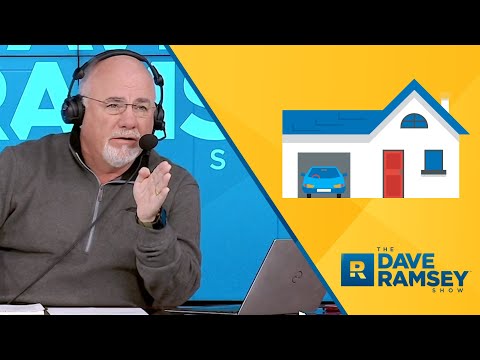Navigating the mortgage landscape can sometimes feel like setting sail in uncharted waters. With whispers and legends of how much your mortgage should be, it’s time to shore up the facts and cast away the myths. Grab your financial compass; we’re diving deep into the sea of mortgages to reveal truths that may just rock your financial boat.

How Much Should Your Mortgage Be in Today’s Market?

The Ground Truth: How Much Should My Mortgage Be in Comparison to My Income?
Alright, let’s get down to brass tacks. There’s a sturdy rule in the financial framework from back in the day that still holds up: the 28/36 rule. Financial sages advise that your mortgage payment shouldn’t nibble away more than 28% of your gross monthly income, and your total debt buffet – we’re talking the full spread including your mortgage, student loans, and those credit card bites – shouldn’t exceed 36%.
Across the United States, the dance with income-to-mortgage ratio is a varied one. In some locations, like the breath-taking vistas of California, the market might pressure you into a higher ratio, whereas in the more subdued economy of, let’s say, Ohio State Vs Georgia, homes could be coupled with a lesser percentage of your income, like two-step partners in a financial barn dance.
Take Sarah from Seattle with her tech job jackpot or Bob from Buffalo balancing on a tighter budget; mortgage sizes adjust as per their financial fiddles. Sarah might snuggle comfortably with a mortgage that’s a bit higher than the recommended ratio, while Bob could be banking on something more conservative to make sure he isn’t stretching his salary too thin.

| Factor | Description | Example Calculation (Monthly) | Notes |
|---|---|---|---|
| Monthly Gross Income | The total pre-tax income earned each month. | $5,000 | To be used as a baseline for calculating mortgage limits. |
| 28% Mortgage Rule | Maximum mortgage payment as a percentage of monthly gross income. | $5,000 x 0.28 = $1,400 | Includes principal, interest, taxes, and insurance (PITI). |
| Mortgage Payment Components | The components included in the mortgage payment (PITI): Principal, Interest, Taxes, and Insurance. | Varies based on loan details and tax rates. | Taxes and insurance can fluctuate over time. |
| 28% / 36% Rule | Housing costs should be no more than 28% of gross income, and all debt obligations should not exceed 36% of gross income. | $5,000 x 0.28 = $1,400 for mortgage | Remaining 8% ($400) for other debts (credit cards, loans). |
| $5,000 x 0.36 = $1,800 total debt allowance | |||
| CFPB Qualification Standard | Percentage of monthly income that banks may use to qualify mortgage amounts. | $5,000 x 0.43 = $2,150 | High debt-to-income ratio can be riskier for borrowers. |
| Banks might allow higher but it’s not recommended. | |||
| Financial Stability & Comfort | How the mortgage payment affects your financial health and sense of financial security. | Subjective assessment. | Personal budget, savings, and emergency funds should be considered. |
| Additional Housing Expenses | Costs associated with homeownership beyond the mortgage payment, such as HOA fees, maintenance, and utilities. | Varies greatly by property and location. | Should be factored into total housing cost, not just mortgage payment. |
| Personal Circumstances | Individual or family financial goals, spending habits, and job stability. | Subjective assessment. | Can influence willingness to take on larger or smaller mortgage. |
| Future Plans | Consideration for future income stability and potential large expenses (e.g., education, healthcare). | Subjective assessment. | Mortgage flexibility is important for life changes. |
Delving Into Data: Analyzing Recent Trends in Mortgage Size Adjustments
So, we’ve seen the waves of economic factors crash and recede over the mortgage landscape. Lately, folks have been leaning into mortgages that might have been heart-stopping a decade ago. But times change, and so do market norms. Historical comparisons? They’re like watching old Daniel Day Lewis Movies – classic but set in a different era.
The trending narrative emphasizes that while home prices ascend, lending practices have become more lenient, giving a nudge to that 28% rule. Where once banks might have recoiled at the thought, now they stretch a qualifying mortgage to 43% of a borrower’s income!
However, it’s not as wild-west as it sounds. Lenders today are like the GA Secretary Of State – they have rules and regulations to abide by, ensuring that financial frolics don’t leave you in a cash crunch.

What Experts Say: Ideal Mortgage Size for Financial Health
In the financial realm, experts twirl their calculators passionately and emerge with the verdict: stick close to that golden 28% rule. It’s like a financial health diet—stick to it for optimum vitality. Interviews with banking honchos echo the sentiment with nods to adaptability: you don’t just plug numbers into a home loan approval calculator; you consider personal circumstances as well.
These insights aren’t just for clear sky days; they’re lighthouses in the current economic fog. For instance, say Jenny from Jacksonville sees mortgage rates shrivel; she pounces on purchasing a picturesque abode, capably managing a mortgage that plays by the rules.

The Role of Interest: How Mortgage Rates Influence Your Loan Size
Here’s the rub: interest rates can turn a manageable mortgage into a fiscal Frankenstein monster. When rates dip low, it’s like the market waves you in for a warm hug, giving you more bang for your buck. On the flipside, climbing rates can sour the deal, as they push the mortgage size you can handle down like a seesaw.
Jim in Jersey might grab a great rate, locking in a mortgage that’s a feather in his financial cap. Meanwhile, Tina in Tulsa waits, and now rising rates mean her dream home just got a tad dreamier and out of reach.
Future rate shifts? They’re as predictable as a toddler’s mood – you can guess, but don’t bet the farm on it. Financial forecasters, not unlike weather predictors, gaze into their crystal balls pondering whether we’re on the brink of an interest rate storm or expecting calm seas ahead.
What Percent of Mortgage to Income is Too Much?
Let’s draw it in the sand clearly: a mortgage causing you to break out in a cold sweat each month is a “no-no.” That’s mortgage stress knocking at your door, and it usually saunters in when the mortgage-to-income ratio scales past the comfort zone of the 28/36 rule. For some, the stress alarm blares a warning at 30%, while others might push their luck till 40%.
Then there’s the geography game—a swanky Womens lunch box in downtown Manhattan costs more than a deluxe diner spread in sleepy Springfield. Similarly, a mortgage chewing up 40% might be reasonable in New York but ludicrous in New Mexico.
The trick lies in crafting a balance grander than a master chef’s signature dish—mortgage on one side, life’s other financial flavors on the other.
Life Events and Mortgage Size: Planning for the Future
Life isn’t a dry spreadsheet – it’s a vibrant canvas of events, each adding a swath of color to the financial big picture. Marriage? That’s a merger calling for a mortgage reevaluation. Kiddos on the horizon? You might want to shrink that mortgage to make room for diaper dollars. Facing the golden sunrise of retirement? Time to align your mortgage with your nest egg.
Consider Kevin and Kim in Kentucky. With matrimonial bells still echoing, they adjusted their mortgage to fit two incomes. Fast forward, add two children, and voilà! Their needs morphed, and their mortgage followed suit, keeping their financial sails unfurled and fluttering.
Beyond the Numbers: Emotional Considerations in Mortgage Size Decisions
There’s an emotional tapestry woven into the mortgage equation. A mansion-sized mortgage might bring status, but being “house poor” is the ghost at the banquet, haunting every paycheck with its eerie presence. It’s not just about keeping up with the Joneses anymore; it’s about keeping up with your peace of mind.
It’s like stringing up a hammock between two trees; it needs to balance. Ask any psychologist and they’ll sing the same tune: financial serenity plays a pivotal chord in your mental symphony.
Leveraging Technology: How Fintech is Revolutionizing Mortgage Size Calculations
We live in an age where a swipe and a tap bring the world to our fingertips. Fintech tools, with their sleek interfaces and snappy algorithms, serve up mortgage size calculations with the precision of a seasoned barista.
The modern borrower juggles apps like Mens Braids – with style and confidence. Gone are the days of sweating beneath fluorescent bank lights; now, you can assess your mortgage destiny over coffee with tools more accurate than the dowsing rods of yore.
As for reliability, these digital darlings are the belle of the ball, guiding users to informed choices. With these wingmen, the mortgage path is less a labyrinth and more a leisurely stroll.
Conclusion: Strategizing Your Mortgage Size for Tomorrow’s World
Alright, to land this financial flight with finesse, remember that insights on how much your mortgage should be are treasures more precious than lost Spanish galleons. Today’s trends thread through tomorrow’s prospects—stay educated, stay savvy.
Belay those numbers firmly and dabble with personal enoughness to tailor your mortgage journey. With a hearty balance of financial and personal spices, your mortgage-size stew will be simmering to perfection. Keep a keen eye on those economic winds, and may your mortgage voyage sail toward serene sunsets.
Deciphering the Puzzle: How Much Should Your Mortgage Be?
Well, Isn’t That Interesting…
Strap in, homeowner hopefuls, and prepare for a wild ride to uncover the secrets of your perfect mortgage size!
The Golden Rule of Thumb
Ever heard of the “28/36 rule”? This isn’t your grandma’s cross-stitch pattern. No siree! It’s an unwritten financial law that whispers, “Keep thy housing expenses below 28% of your gross monthly income, and let not your total debt load creep over 36%.” Missing this little nugget of wisdom could turn your dream home into a budgetary nightmare. Fancy a safe financial cushion? Then you’d better buddy up with the 28/36 rule.
Starting Gate Shenanigans
Buckle up! The starting line of your home-buying race is marked by the pile of cash tagged “down payment.” Ever scratched your head, wondering just How much For a down payment on a house? There’s a chorus out there singing the classic 20% tune, but times are a-changin’. Nowadays, you could wriggle through with as little as 3% down if you play your cards right. But remember, the less you plop down now, the more you’ll pay later!
Size Isn’t Everything, but…
So, we get to the meat of the matter: how much should your mortgage be? Here’s a zinger – it’s not just about the cold, hard cash. Your gross monthly payment is a sneaky serpent that wiggles its way into how much should your mortgage be, and affects your monthly budgeting ballet. Shh… Lessons learned from the gross monthly payment can ensure you aren’t dining on ramen noodles for the next 30 years!
The Tale of the Tape
No matter how much bling you’ve got in your pocket, or how much should your mortgage be, there’s no one-size-fits-all magic number. Don’t get stars in your eyes when you see that mansion on the hill; your mortgage should be snuggled up cozy with your financial reality. After all, you want your home to be your castle, not your prison!
There you have it, folks—some breathtakingly brilliant tidbits to store in your trivia treasure chest! Remember, knowledge is power, especially when it’s about how much should your mortgage be. Now go forth and conquer that mortgage mountain!

How much of your mortgage should your salary be?
When you’re juggling finances, it’s wise to make sure your mortgage doesn’t munch too much of your paycheck. Generally, it’s recommended that your monthly mortgage payment be no more than 28% of your pre-tax salary. So, if you’re raking in $5,000 a month before taxes, aim to keep your mortgage at or below $1,400. And remember, folks, stretching your budget thinner than a dime can make for some tough times!
What is a good mortgage amount?
A good mortgage amount is one that fits snug as a bug in your financial picture without cramping your style. Think of a mortgage that allows you to comfortably manage payments, along with life’s other expenses and a bit set aside for those rainy days. Usually, lenders suggest a mortgage where the monthly payment is no more than 28% of your monthly income. So, keep it cozy, and don’t go overboard.
Is 30% on a mortgage too much?
Ah, 30% on a mortgage? Well, it’s kind of like walking a tightrope – doable, but not without risk. Sticking to less than 28% of your income is the gold standard to keep things comfy. If you’re up at 30%, you’re not in the danger zone, but you’re definitely flirting with it. Keep a close eye on your budget, and make sure you’re not sacrificing your savings or lifestyle.
Is 40% of income on mortgage too much?
Now, spending 40% of your income on a mortgage is like trying to stuff a quart into a pint pot – it’s a tight squeeze and could cause a spill. Financial experts recommend staying under the 28-30% range to avoid being “house poor.” At 40%, you’re leaving less wiggle room for emergencies, savings, and fun money. So, unless you’ve got extra cash floating around, it might be too hefty a chunk to bite off.
What house can I afford on 70K a year?
On a 70K salary, looking at houses may have you daydreaming, but keep those dreams grounded with what you can truly afford. A rough estimate would suggest you can purchase a home around $200,000 to $300,000, but that can vary based on debts and down payment. Aim for monthly payments that don’t exceed a quarter of your take-home pay, ensuring you can still live comfortably without the house owning you!
How much house can I afford if I make $120000 a year?
With a $120,000 yearly salary, you’re sitting prettier than a penny. You could potentially afford a home priced at $500,000 to $600,000, but this depends big time on debts and your down payment size. Stick to the golden rule of 28% of your monthly income for the mortgage payment to keep your finances shipshape, and don’t forget about those hidden homeownership costs that can pop up!
Is $2000 a month too much for a mortgage?
Is $2,000 a month too much for a mortgage? Well, that’s like asking if a shoe fits – it’s all about your financial foot size. If you’re pulling in enough dough to keep that within 28% of your monthly income, and can still save for a rainy day, hey, you’re in business. But if coughing up two grand makes your wallet wheeze, you might wanna dial it back.
Is $2,000 a month mortgage high?
Forking over $2,000 a month for a mortgage might sound like a lot of bread, but it’s not about the amount – it’s about what you can handle. It’s high if it’s more than 28% of your monthly income, or if it stops you from saving for retirement or splurging on life’s little pleasures. Think long and hard about your budget to make sure it’s not stretching you thinner than a supermarket bag!
How much mortgage is too high?
How much mortgage is too much? It’s like overpacking a suitcase, it can weigh you down big time. To keep things light, don’t let your mortgage chew up more than 28% of your pre-tax salary. If it does, you might find yourself scrambling to cover other costs and that’s no fun. Stick to this benchmark and you should be able to balance your budget like a pro.
How much home can I afford with 100k salary?
Living on a 100k salary? Not too shabby! Roughly speaking, you might be able to swing a pad priced between $300,000 to $400,000, but keep an eagle eye on that mortgage payment, ensuring it doesn’t jab at more than 28% of your pretax income. Dive into those details of your financial pool to see how deep you can go without getting in over your head.
How much house can I afford for $5000 a month?
If you’ve got $5,000 a month to dedicate to housing, you’re really cooking with gas. You could be looking at homes in the $800,000+ ballpark, but remember the golden rules – they’re not just hot air. Stick to that 28% cap on your monthly income to keep your mortgage manageable and you won’t be sweating the small stuff – like eating!
Is 5% mortgage too high?
A 5% mortgage rate might feel like it’s raining on your parade compared to recent years’ sunshine rates. But listen, it’s not sky-high when you consider the roller coaster of historical rates. What matters is whether the payments are manageable within your budget. If a 5% rate doesn’t cause your finances to teeter-totter, you’re still in the game.
What is the 50 30 20 rule?
The 50 30 20 rule rolls out like this: divide your after-tax income so you spend up to 50% on needs – and yes, a roof over your head counts! Then 30% can go to wants, because life’s not all work and no play, right? The last 20% should be stashed away for savings and debt repayment. Keep to this and you’re cruising down Easy Street with your finances.
Can my mortgage be 50% of my income?
Having a mortgage that’s 50% of your income? You’re skating on thin ice, my friend. This is way above the recommended ceiling of 28%. At this rate, any hiccups in your financial road could send you for a tailspin. It’s better to play it safe and aim for a smaller slice of your paycheck so you can live a little!
What’s the 28 36 rule?
The 28 36 rule comes in handy like a Swiss Army knife for managing your money. Simply put, you shouldn’t spend more than 28% of your gross monthly income on housing expenses, and total debt payments should stay under 36%. Stick to this and you’ll keep your financial boat afloat without springing any leaks.



